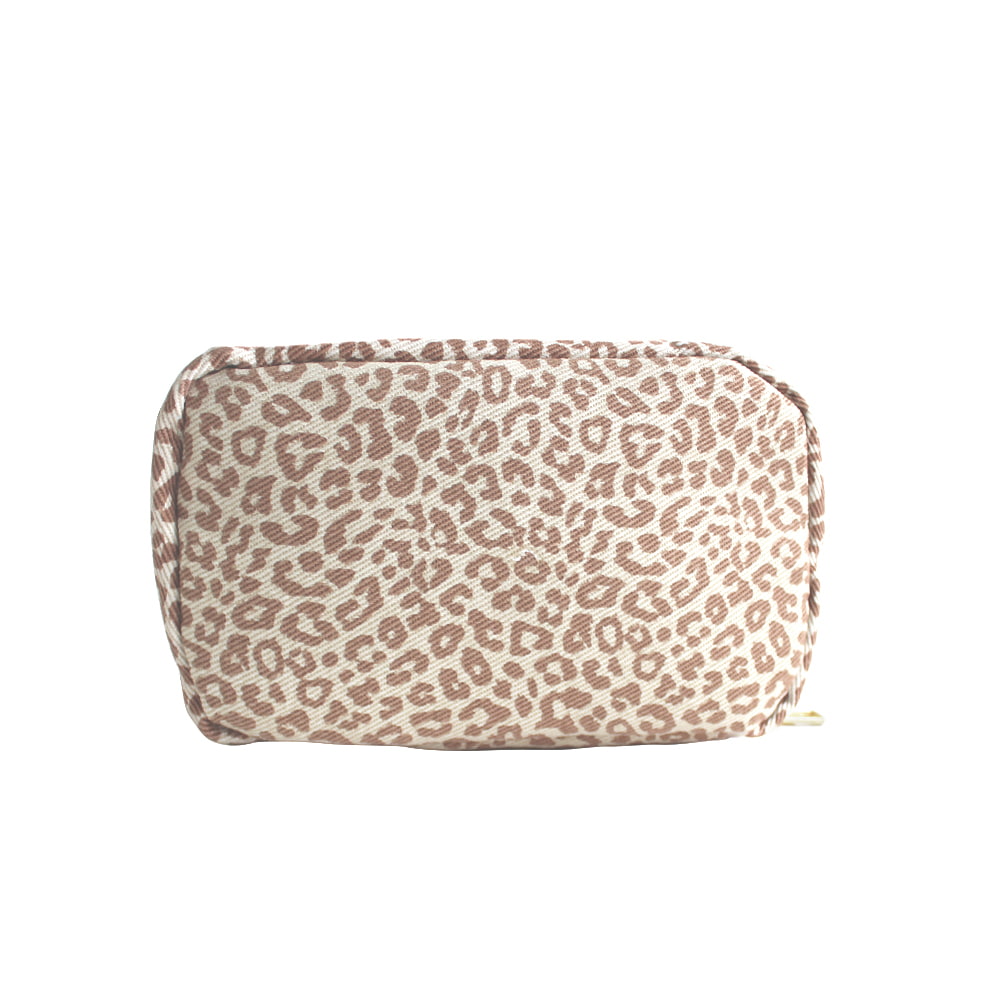The travel cosmetic bag is an essential companion for countless individuals, safeguarding personal care items during journeys near and far. Unlike everyday pouches, these bags must withstand the unique rigors of travel, from being jostled in a suitcase to potential exposure to spills and pressure changes. The perceived quality of travel cosmetic bags is not a matter of chance but the result of deliberate engineering and rigorous validation processes.

Part 1: Material Selection and Integrity
The foundation of any high-quality product lies in its components, and for travel cosmetic bags, this principle is paramount. The choice of materials directly influences the bag's durability, weight, water resistance, and overall tactile appeal, forming the layer of quality assurance.
Manufacturers begin by sourcing robust fabrics. High-denier polyester or nylon is a common choice for the main body of reliable travel cosmetic bags due to its exceptional tear strength and abrasion resistance. These synthetic materials are often coated with polyurethane (PU) or polyvinyl chloride (PVC) to create a water-resistant barrier, a critical feature for protecting contents from accidental leaks or humidity. The quality of this coating and its bond to the fabric is meticulously checked to prevent peeling or cracking over time. For the interior, linings are selected not only for their visual appeal but also for their functionality. A smooth, easy-to-clean lining, sometimes with a laminated backing for added leak protection, is a standard feature in well-made travel cosmetic bags. Furthermore, the hardware—zippers, pulls, and snaps—is a critical focus point. Quality is guaranteed by using branded, corrosion-resistant zippers like YKK, which are tested for thousands of open-close cycles to ensure smooth operation. Similarly, plastic or metal components are scrutinized for their structural integrity and resistance to tarnishing. The conscientious selection of these materials ensures that the travel cosmetic bags produced are built to last from the ground up.
Part 2: Design and Construction Techniques
Good materials alone are insufficient; their assembly through intelligent design and precise construction is what transforms them into a dependable product. The architectural blueprint of travel cosmetic bags is carefully considered to enhance both functionality and longevity.
A key aspect of the design is the structural form. Many quality travel cosmetic bags feature semi-rigid or structured bodies, which prevent them from being crushed in packed luggage, thereby protecting fragile items inside. This structure is often achieved through the integration of firm panels or through boxed construction that creates gussets, expanding the capacity without compromising the bag's shape. The stitching is another critical indicator of quality. Reinforced stitching at all stress points, such as where the zipper is attached to the fabric and where handles are anchored, is a non-negotiable standard. The thread itself is typically a high-tenacity bonded nylon, chosen for its strength and resistance to fraying. The design of travel cosmetic bags also frequently includes thoughtful details that elevate their utility. Multiple compartments, including mesh pockets that allow for quick visibility of contents and separate wet and dry zones, are hallmarks of a well-thought-out design. The precision with which these elements are cut and assembled—ensuring patterns align at the seams and that zippers lay flat—is a direct reflection of the manufacturing quality control. This meticulous approach to construction guarantees that the travel cosmetic bags are not only durable but also intelligently organized for the user.
Part 3: Validation Through Testing and Compliance
Before any travel cosmetic bag reaches the consumer, its quality must be objectively verified through a series of standardized tests. This phase moves beyond theoretical design and into practical validation, providing tangible proof of performance.
These tests simulate real-world conditions that travel cosmetic bags are likely to encounter. A common procedure is the "drop test," where a bag filled with standard weights is repeatedly dropped from a specified height to assess the durability of seams and hardware. Zippers undergo cycle testing, being opened and closed thousands of times to ensure they will not fail with regular use. For water resistance, a hydrostatic pressure test may be applied to the fabric to measure its ability to withstand moisture penetration. The colorfastness of the materials is also tested to ensure that dyes will not bleed onto other items in luggage or onto the user's hands. Furthermore, compliance with international safety and quality standards, such as those pertaining to material composition (e.g., REACH for chemicals), provides an additional layer of quality assurance for travel cosmetic bags. Manufacturers often conduct internal quality audits at various stages of production, from inspecting raw material batches to performing random checks on finished goods. This rigorous regime of testing and compliance offers a final, crucial guarantee that the travel cosmetic bags will perform as expected, providing reliability and peace of mind for the traveler.
The company covers an area of 1500 square meters and specializes in producing various types of makeup bags, jewelry bags, children's bags, and wash bags, with a monthly output of about 100000 bags.
 We Are Here
We Are HereAddress: 6th Floor, No. 2 Gantang West Road, Huanglinshan Industrial Zone, Yiting Town, Yiwu City, Jinhua City, Zhejiang Province, China
 Contact Us
Contact UsPhone: +86-13857970558

sales1@xibodan.com
sales2@xibodan.com
sales6@xibodan.com
If you have any requirements, please click on "contact" to leave a message.

 English
English русский
русский Español
Español